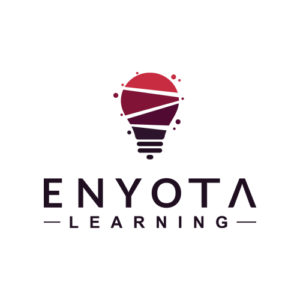Why Would Your Organization Need To Invest In Rapid eLearning Solutions?
- To push training programs within a short span of time
- To simplify long development cycles and complex eLearning designs
- To save time in responding to learners’ needs
- To save the extra efforts needed to plan an over-the-top eLearning development cycle
And if your organization is on a tight budget, rapid eLearning development can also lend its hand toward assisting you with saving costs and budgets!
What Is Rapid eLearning Development, Why Should You Choose It, And How Do You Get Started?
Defining Rapid eLearning Development
Rapid eLearning development means building eLearning courses in a short duration and in an inexpensive manner. By choosing and putting together readily available learning objects or assets like videos, photographs, assessments, and audio, Instructional Designers can quickly build an eLearning course. By following this route, organizations are saving on both time and costs to develop an extensive eLearning program, especially when the time to build is short and the need to train is now.
In short, rapid eLearning development manages to deliver the intended training to learners when the need is hot and in an economical manner. That’s comparable to hitting two birds with one stone in real life.
The James Martin book, Rapid Application Development (RAD), talks about rapid development as the best possible process to develop applications with a strong focus on interface, similar to eLearning. The book also talks about the usage of graphical interface building tools (eLearning authoring tools) as rapid applications software.
Differences between rapid eLearning and traditional eLearning solutions:
- Rapid learning courses are built fast and deliver important training while the learner’s needs are relevant. Traditional eLearning development on the other hand takes longer to plan and execute as it accounts for future needs as well (bigger picture).
- Rapid learning is a solution for on-the-spot training challenges, whereas traditional eLearning aims for prolonged training over a greater duration, keeping larger goals in mind.
- Rapid learning presents a shorter learning curve for L&D. Traditional eLearning presents a longer learning curve keeping in mind its extensive nature.
- Rapid learning is cost-considerate. Traditional eLearning is comparatively cost-intensive.
Both rapid eLearning development and traditional training have their own set of advantages. Making the right decision falls upon the L&D team and their training initiatives, keeping budgets, resources, time, and needs in mind.
It is just unwise to say that either one is better than the other. Rather, it is ok to say that one serves a better purpose than the other in certain situations.
Why Would You Choose Rapid eLearning Solutions And Services?
Organizations have already noted the benefits of employing rapid eLearning solutions to solve training needs. Apart from saving effort and time costs, rapid eLearning solutions are employed to fend real-world challenges with regard to business and employee development like:
- Training sales teams on changing customer preferences and evolving products
- Reducing stress on employees who work in a highly dynamic work environment
- Adhering to new compliance guidelines on short notice
Does Rapid eLearning Development Assist Businesses In Real Time?
Rapid eLearning development assists organizations with multiple real-time scenarios like:
- Developing and publishing online guides, product manuals, and online courses
- Delivering complex training quickly and with relative ease
- Using simple but effective assessments
- Training employees on how to use new software from the day of implementation itself
- Educating everybody about changing guidelines
- Creating quick case studies to solve current challenges
How Do You Get Started?
The first step is to determine who your vendor will be. Or are you even planning on outsourcing it in the first place? In-house projects will put the stress of time, efforts, experience, and technical expertise on your L&D team.
eLearning projects can be complicated even if it is based on the RAD model. Rapid eLearning development relies on rapid prototyping and working model tests. Moreover, the idea is to quickly develop it because the time on hand is less. So, you’d rather let professionals manage the activity than invest time in it yourself and end up with very little productivity.
Here’s how you can get started:
- Assess your training needs
- Distribute the resources
- Let some users get involved
- Understand the RAD approach
- Outline your eLearning content
- Outsource to an agency or build inside (if experienced)
Selecting The Right Vendor
Finding the time and budget needed to invest in custom eLearning is not always possible. This is why you need something quick and easy to deploy without it losing the essence of being crucial training. You need a vendor, in this case, an experienced eLearning vendor. You may even look for a vendor who has prebuilt frameworks to further drop the costs and hasten the development. This approach can reduce time-to-market by 40%-50%. Once again, it is cost-conscious and also slices development time. Hence, a great option for quick and effective training.


